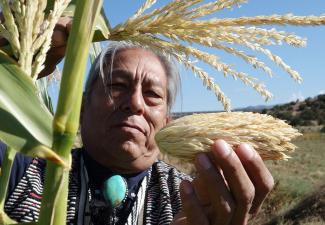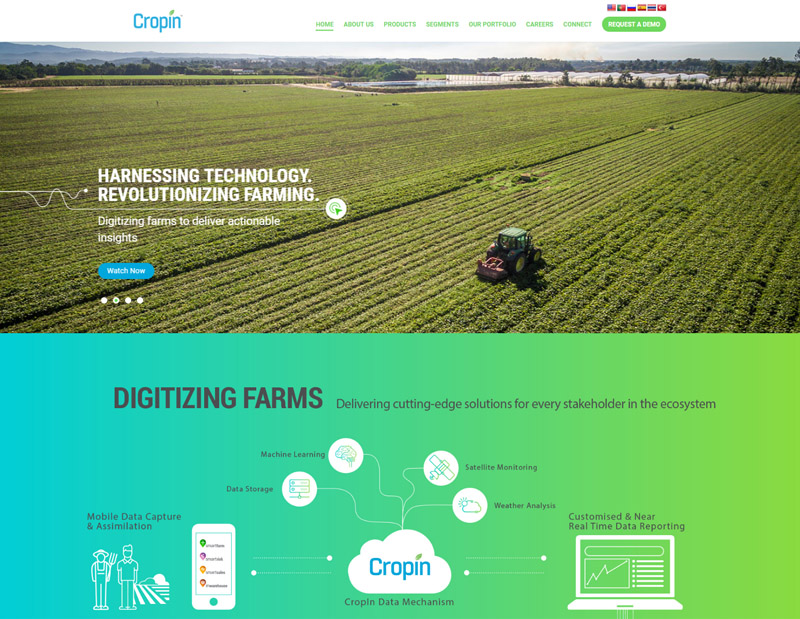Summer Special
The value of 158 varieties of cauliflower

There is much talk about species decline: about how insects are dying on an enormous scale, about the many species that are disappearing before they can even be discovered, about how climate change is destroying habitats. But only a few people are aware that our seeds, the most important foundation of our nutrition, are also being lost: over 90 % of all varieties of grains, vegetables and other crops have already disappeared. Many of them had been passed on for thousands of years until industrialised agriculture no longer had any use for them.
How many varieties of kohlrabi are you familiar with? There used to be 55, but now there are only three. Artichokes come in just two varieties from what was once 34. And the number of cauliflower varieties has shrunk down to eight from an inconceivable 158. These numbers come from the film “Seed: The untold story”, in which US documentary filmmakers Taggart Siegel and Jon Betz convey a sense of the inestimable value of our cultivated plants. They reveal the enormous extent of the loss and tell the story of the indigenous people, scientists and activists from all over the world who are fighting to preserve the diversity that remains.
My spontaneous reaction was: why do we need 158 varieties of cauliflower? But it gave me pause to learn that the varieties that still exist belong largely to Bayer, following its takeover of Monsanto, especially when I read about what that corporation prizes when it comes to cultivation. For instance, the latest cauliflower innovation, “Curdivex”, stays bright white (which sells better) and is easy to harvest (which is good for farmers). Generally speaking, the company prefers varieties with high yields and mass appeal. Resistance to pests and a long shelf life are also important criteria. But in times of climate change, there is a need for varieties that can withstand drought or high levels of moisture, which might have lower yields, but would at the same time be robust or particularly adaptable. Previous generations of farmers valued such characteristics. But nowadays they rarely decide for themselves what varieties they cultivate. The market is being dictated by others.
It comes as no surprise that the film lays the blame on global biotech corporations. They are reproached for their use of genetic engineering, out-of-control chemical application and, in particular, for the way that sterile hybrids have destroyed agricultural production methods and livelihoods. Farmers cannot reproduce these seeds themselves and must buy new ones every year instead. Many people in India, for instance, could not afford to do so, causing them to sink into poverty and despair. There was a wave of suicides as a result, as the film movingly shows.
The fact that only a fraction of the world’s edible plants are being used poses a risk to the growing global population, which must be fed under increasingly difficult conditions due to climate change, water shortages and soil erosion. The seed guardians who are interviewed in the film describe the difficulty of their work. Seeds don’t keep forever and have to be sown every once in a while. That’s a challenge when you’re dealing with thousands of varieties. Furthermore, seed banks are by no means indestructible fortresses. The film cites the example of Iraq, where US forces intentionally destroyed the national seed bank during the Gulf War in the 1990s. Unique varieties from the cradle of agriculture were irrecoverably lost. The largest and most important seed bank in the world is the Svalbard Global Seed Vault in Spitzbergen, Norway. But for one thing, not all cultivated plants are represented there, and for another, it is uncertain how long the permafrost will continue to preserve them.
Therefore the film is undoubtedly justified in calling on audiences to take this issue seriously and protect seeds. It was unclear to me, however, what I can do about the fact that my supermarket only carries one variety of cauliflower.
Film
Seed: The untold story, 2016, USA, directors: Taggart Siegel, Jon Betz.










